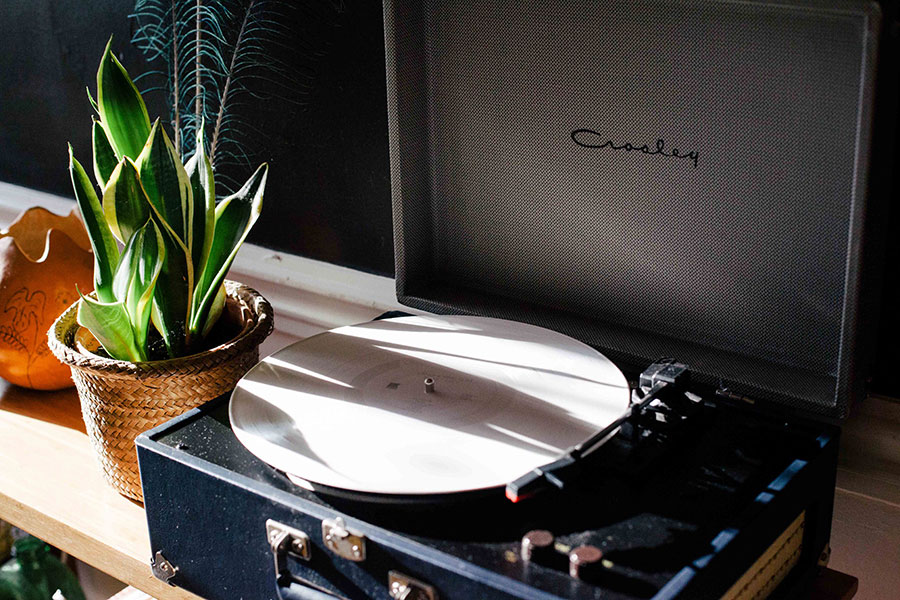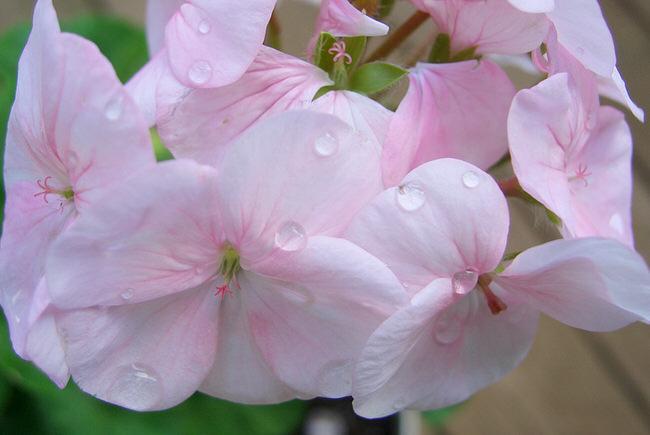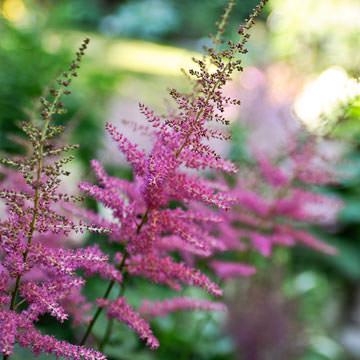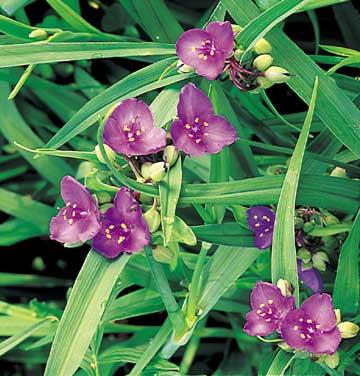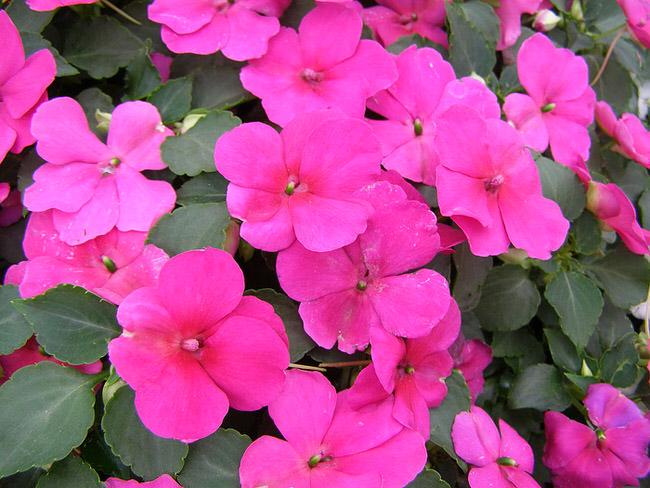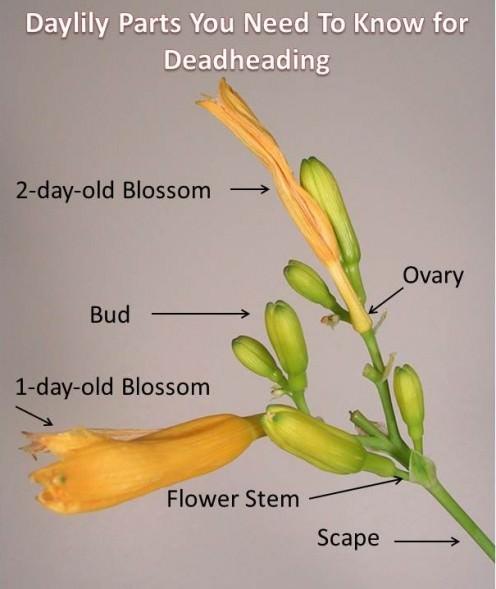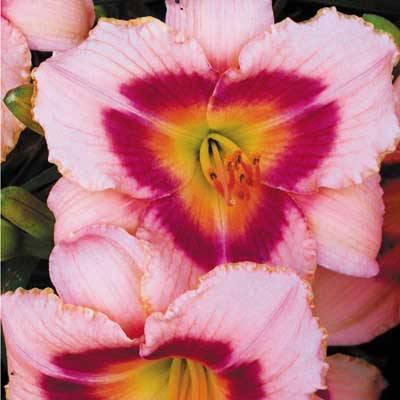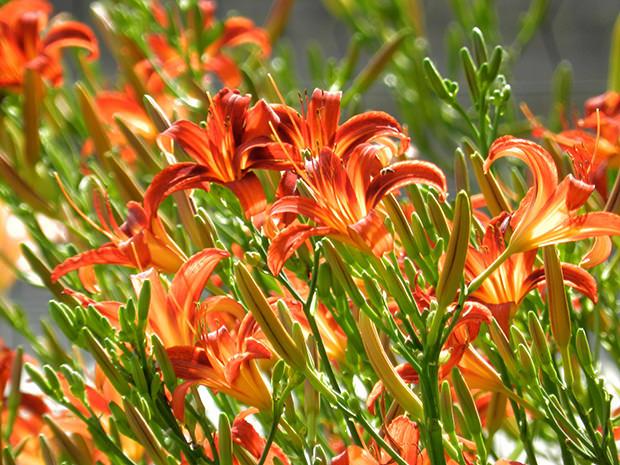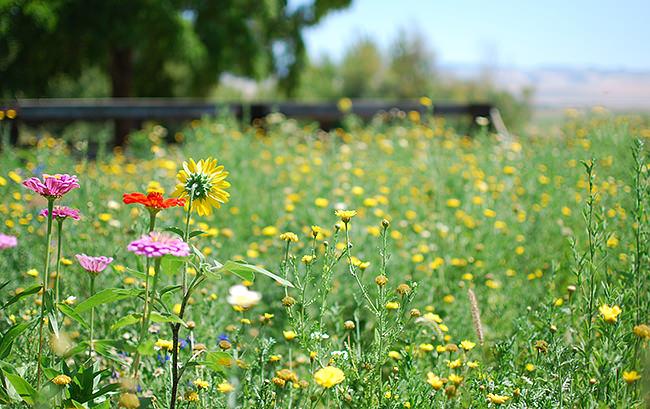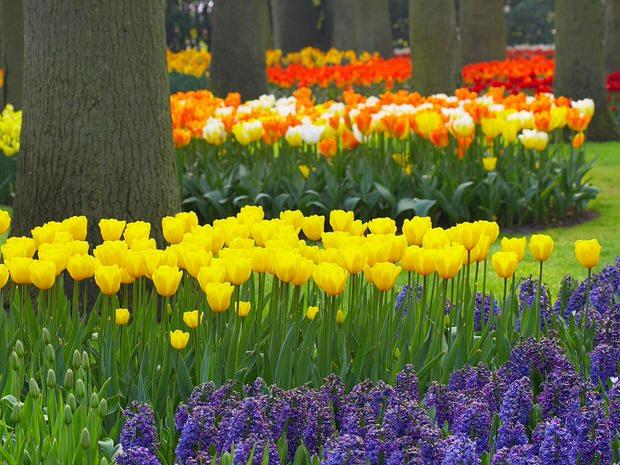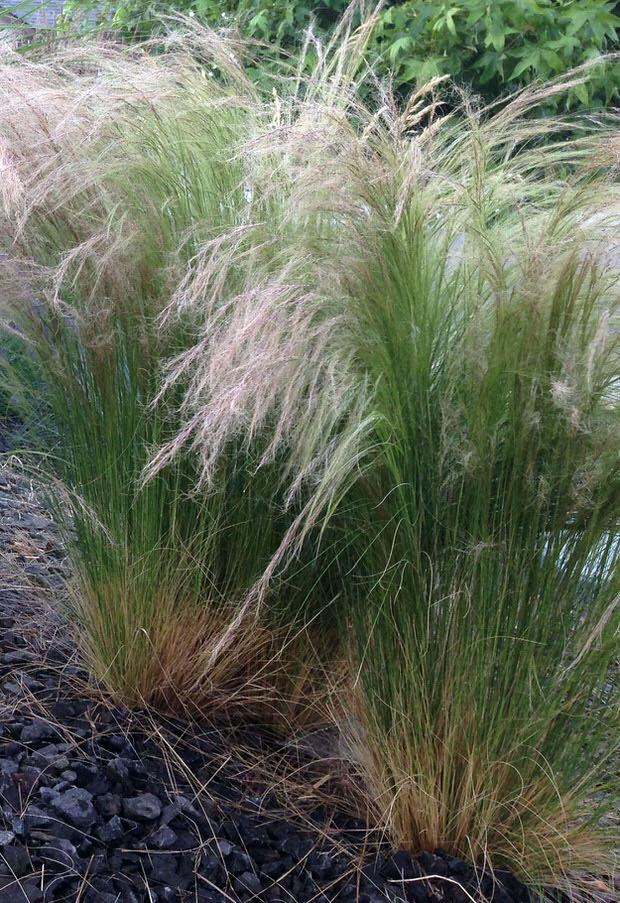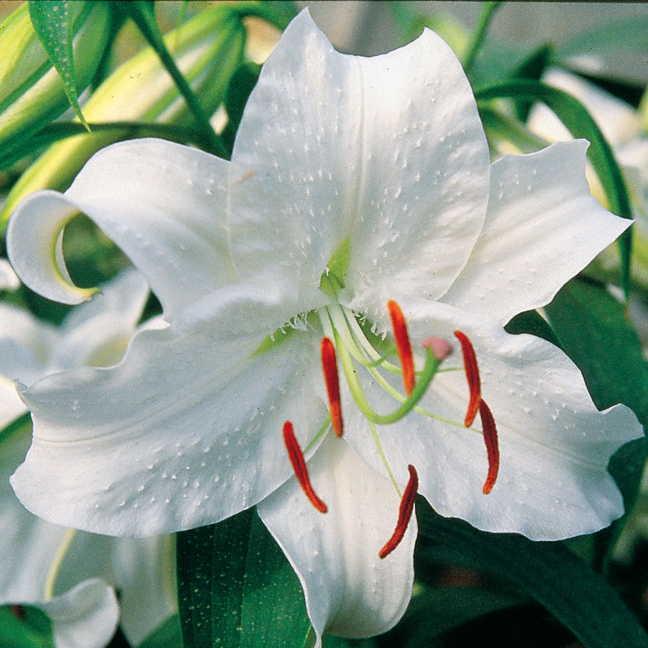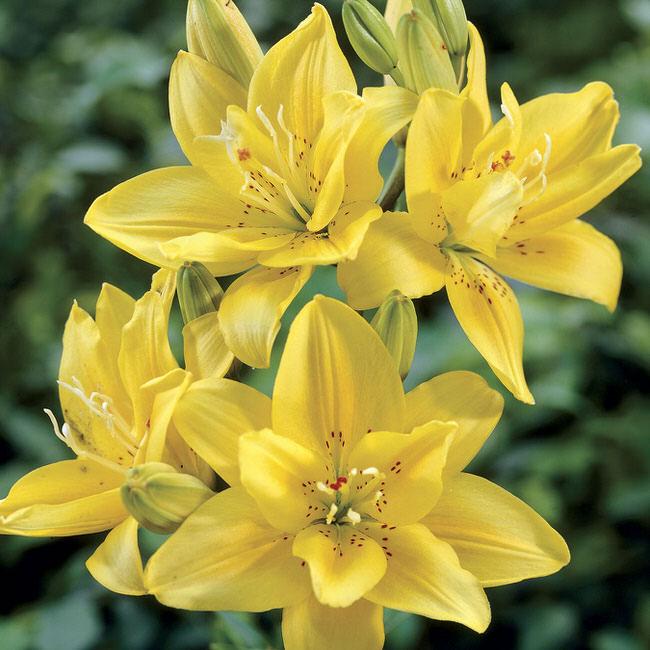花园里是空的哦~
还没有添加花。
动态 (21)
Joss
2017年02月24日

We love good #garden inspiration. And we love #flowers . Put ’em together, and you have fantastic flower beds, ready to make you run to the nursery or pull out those catalogs! So salivate over these photos, take some tips from design pros, and start designing that next flower bed. In this flower garden above, you can see that while the plants themselves seem a cottage garden jumble, this is actually a more formal garden design. Why? The hard lines of the hardscaping and the repeating pants within the bed are your clues. Just remember this if you have a garden you want to add a little “properness” too!

Need some spring flower bed inspiration? These two inspriational photos are full of tulips. This first one used a complimentary color scheme of blue and yellow, for a more calming and minimal feel.
For a little more energy, use warmer colors mixed with some perennials. The plants will fill in as the tulips fade to cover and distract from the browning foliage.
Have shrubbery or evergreen foundation plantings that are just boring? Add bright and happy colors in front of the shrub bed to create some fantastic energy! Keep the texture of the flower bed in contrast to the foliage. For instance, in this photo, the daylilies have strappy, coarse foliage and are contrasted nicely with fine textured, small flowers. This keeps things interesting!
This traditional style flower bed from ‘Houzz’ shows us that when using a lot of bright color, a pop of white will keep things grounded! Green will accomplish the same thing.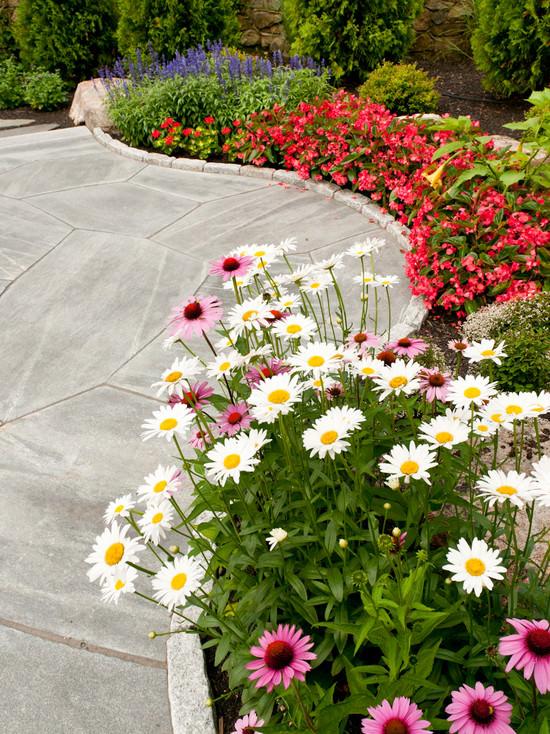
This informal flower bed from ‘BHG‘ is a great example of using layers in your plantings… You see more greenery and height in the back, working forward to shorter and brighter flowers. This is great design approach. I love the curved shape of this garden, it gives it a casual feel.
Now a couple from Pinterest… This first Pinterest pick is a great example of using a color theme, and it’s my fav! Blues and pinks are a romantic and still colorful choice… If you want to tone it down, add white or grey!
Another amazing example of that color scheme, but this “River” of grape hyacinths from Pinterest is a show stopper! It wouldn’t be the same without the pink and white tulips. They visually slow you down, and add a little punch, but don’t take away from the mass of blue!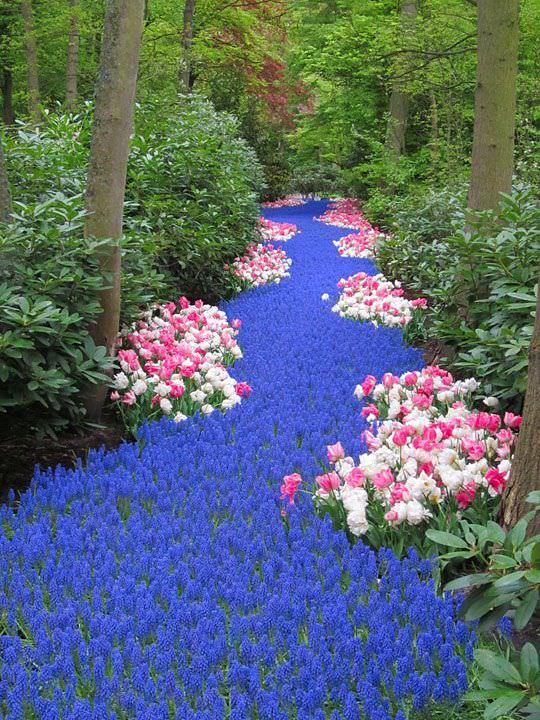
Ok, leaving the most fantastic for last… This is Chrissie D’Esopo’s garden, courtesy the ‘Connecticut Horticultural Society‘, photo by Steve Silk. She opened her home up for a garden tour for charity, and it is AMAZING. Have you ever seen such a colorful and uplifting garden? Nothing more to say about this, but WOW!
So are you running for the car, complete with gardening gloves so you can load up as soon as you get to the nursery? I’d like to tell you to slow down, take your time and think this through… but I’m already out the door. :)

Need some spring flower bed inspiration? These two inspriational photos are full of tulips. This first one used a complimentary color scheme of blue and yellow, for a more calming and minimal feel.

For a little more energy, use warmer colors mixed with some perennials. The plants will fill in as the tulips fade to cover and distract from the browning foliage.

Have shrubbery or evergreen foundation plantings that are just boring? Add bright and happy colors in front of the shrub bed to create some fantastic energy! Keep the texture of the flower bed in contrast to the foliage. For instance, in this photo, the daylilies have strappy, coarse foliage and are contrasted nicely with fine textured, small flowers. This keeps things interesting!

This traditional style flower bed from ‘Houzz’ shows us that when using a lot of bright color, a pop of white will keep things grounded! Green will accomplish the same thing.

This informal flower bed from ‘BHG‘ is a great example of using layers in your plantings… You see more greenery and height in the back, working forward to shorter and brighter flowers. This is great design approach. I love the curved shape of this garden, it gives it a casual feel.

Now a couple from Pinterest… This first Pinterest pick is a great example of using a color theme, and it’s my fav! Blues and pinks are a romantic and still colorful choice… If you want to tone it down, add white or grey!

Another amazing example of that color scheme, but this “River” of grape hyacinths from Pinterest is a show stopper! It wouldn’t be the same without the pink and white tulips. They visually slow you down, and add a little punch, but don’t take away from the mass of blue!

Ok, leaving the most fantastic for last… This is Chrissie D’Esopo’s garden, courtesy the ‘Connecticut Horticultural Society‘, photo by Steve Silk. She opened her home up for a garden tour for charity, and it is AMAZING. Have you ever seen such a colorful and uplifting garden? Nothing more to say about this, but WOW!

So are you running for the car, complete with gardening gloves so you can load up as soon as you get to the nursery? I’d like to tell you to slow down, take your time and think this through… but I’m already out the door. :)
文章
Joss
2017年02月22日

Alliums are one of the best and easiest bulbs to #grow in the gardening world, but often overlooked. Gorgeous, show stopping blooms, easy growing requirements, and amazing architectural shape make these perfect for any gardener, beginner or seasoned veteran. The large round or oval #flowers are borne on single stalks that tower over the garden from 1-4 feet, usually in mid spring to early summer, but there are varieties that bloom even in the fall. Flowers can be tiny little globes, or large 6 inch giants. One of the best traits of the allium over other spring and summer bulbs is that most animals will avoid eating them. Apparently, people aren’t the only ones who want to avoid onion breath! That’s right, alliums are simply ornamental, or flowering onions. Don’t let images of big smelly onions growing in your garden dissuade you, these plants are nothing of the sort, with a gorgeous, sweet scent. Beautiful as cut flowers as well, they come in whites, blues, purples, pinks and even yellow. Your tulips and daffodils may still get top billing in the spring, but make sure you tuck some alliums into your flower beds as well. Here is how to grow those amazing alliums! Photo below by ‘Dutch Flower Bulbs‘.

Photo below by ‘Fine Gardening‘. Allium “Jeannine”.
How To Grow Alliums Buy allium bulbs from a good nursery or online resource. You want healthy bulbs with no cuts or soft spots. Research varieties to include several varieties of different bloom times to keep the show going! Most varieties are hardy zones 3-9. Like most bulbs, these look best planted in groups. Plant the bulbs in the fall, before the ground freezes. Plant them to a depth of 3 times their diameter in a sunny or mostly sunny position. Generally, 6-8 inches. Fertilize at planting and yearly in spring with bone meal or a bulb food. Water well, then leave till they burst out in flower in spring and summer! After flowering, allium foliage will wither, brown, and go dormant. Plant them under, behind, and around other perennial plants whose growing foliage will cover the allium foliage later in the summer when it browns. Do not cut back the browning allium leaves until fall, that is how they store energy for flowers the next season. (This is why planting foliage plants around them is important.) Photo below by ‘Gardener’s Supply‘.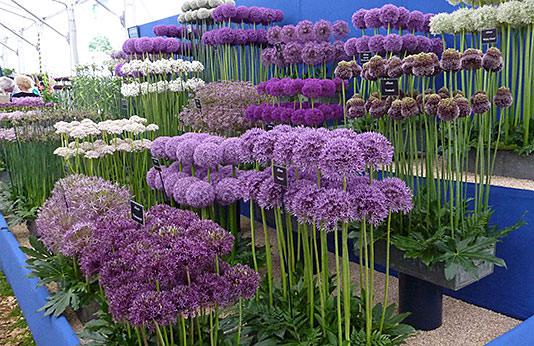
Our Favorite Allium Varieties Gladiator – A giant variety. 3-4 feet tall, this showstopper blooms with 6 inch flowers in May-June. It prefers sun but will tolerate partial shade, and has a sweet scent. From ‘Eden Brothers‘. If you are looking to make a statement in your garden, this is it.
Globe Master – This one is the biggest giant we know of, with blooms topping out at a foot across! 36-40 inches high, it’s a gorgeous pick for any spring to early summer garden. Blooms are slightly more blue than Gladiator. From ‘American Meadows‘.
Allium obliquum – This unusual shade of yellow in a small flowered allium is a perfect selection for a naturalized planting. Growing to just 24 inches high, it’s fragrant and blooms late spring to early summer. From ‘Dutch Bulbs‘.
Mount Everest / Purple Sensation – Long the standard for garden alliums , “Purple Sensation” has 4-5 inch globes and grows to 24-30 inches high. It’s white partner here is “Mount Everest”, perfect in combination because they grow to similar sizes and have similar late spring – early summer bloom times. From ‘Longfield Gardens‘.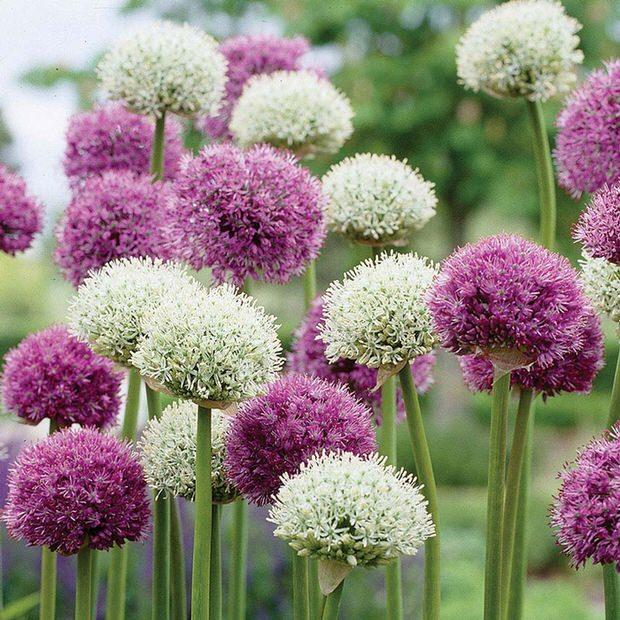
Twinkling Stars – This giant pink variety has 5-6 inch blooms and 3 1/2 – 4 foot stems, making it perfect for the back of the border. Blooms in May – June. From ‘Breck’s Bulbs‘.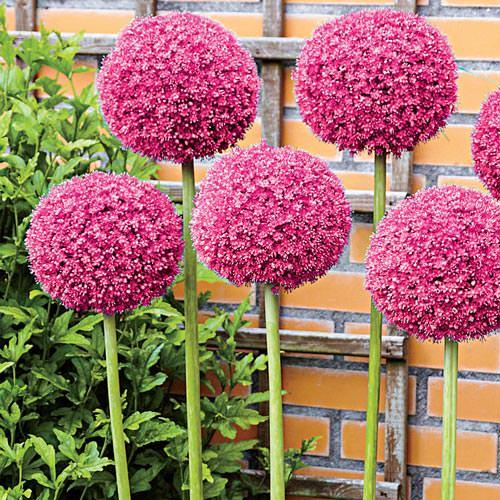
Pink Jewel – A later blooming allium, starting in June into July. This light pink selection grows to 24 inches high, and has 3 inch blooms. From ‘White Flower Farm‘.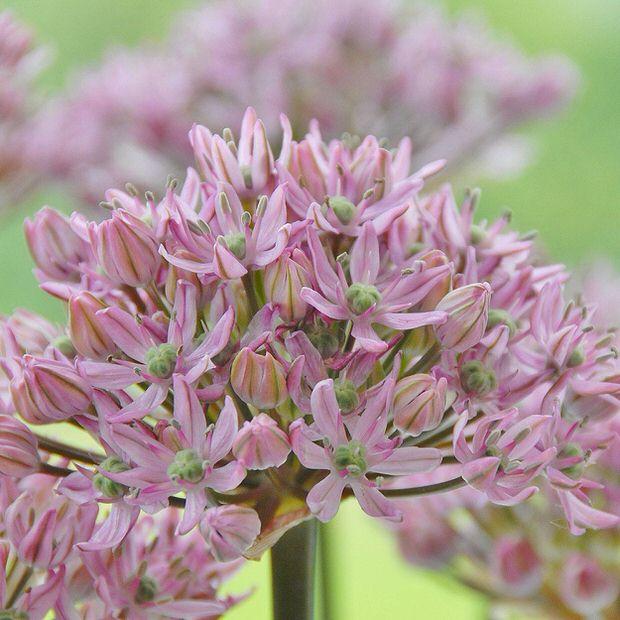
Drumstick Allium – Our last selection is the drumstick allium, an oval shaped reddish bloom that grows to 24 inches high. This allium can actually be grown down to zone 2! Blooms early spring to early summer. Another variety great for naturalizing. From ‘American Meadows‘. So which is your favorite?

Photo below by ‘Fine Gardening‘. Allium “Jeannine”.

How To Grow Alliums Buy allium bulbs from a good nursery or online resource. You want healthy bulbs with no cuts or soft spots. Research varieties to include several varieties of different bloom times to keep the show going! Most varieties are hardy zones 3-9. Like most bulbs, these look best planted in groups. Plant the bulbs in the fall, before the ground freezes. Plant them to a depth of 3 times their diameter in a sunny or mostly sunny position. Generally, 6-8 inches. Fertilize at planting and yearly in spring with bone meal or a bulb food. Water well, then leave till they burst out in flower in spring and summer! After flowering, allium foliage will wither, brown, and go dormant. Plant them under, behind, and around other perennial plants whose growing foliage will cover the allium foliage later in the summer when it browns. Do not cut back the browning allium leaves until fall, that is how they store energy for flowers the next season. (This is why planting foliage plants around them is important.) Photo below by ‘Gardener’s Supply‘.

Our Favorite Allium Varieties Gladiator – A giant variety. 3-4 feet tall, this showstopper blooms with 6 inch flowers in May-June. It prefers sun but will tolerate partial shade, and has a sweet scent. From ‘Eden Brothers‘. If you are looking to make a statement in your garden, this is it.

Globe Master – This one is the biggest giant we know of, with blooms topping out at a foot across! 36-40 inches high, it’s a gorgeous pick for any spring to early summer garden. Blooms are slightly more blue than Gladiator. From ‘American Meadows‘.

Allium obliquum – This unusual shade of yellow in a small flowered allium is a perfect selection for a naturalized planting. Growing to just 24 inches high, it’s fragrant and blooms late spring to early summer. From ‘Dutch Bulbs‘.

Mount Everest / Purple Sensation – Long the standard for garden alliums , “Purple Sensation” has 4-5 inch globes and grows to 24-30 inches high. It’s white partner here is “Mount Everest”, perfect in combination because they grow to similar sizes and have similar late spring – early summer bloom times. From ‘Longfield Gardens‘.

Twinkling Stars – This giant pink variety has 5-6 inch blooms and 3 1/2 – 4 foot stems, making it perfect for the back of the border. Blooms in May – June. From ‘Breck’s Bulbs‘.

Pink Jewel – A later blooming allium, starting in June into July. This light pink selection grows to 24 inches high, and has 3 inch blooms. From ‘White Flower Farm‘.

Drumstick Allium – Our last selection is the drumstick allium, an oval shaped reddish bloom that grows to 24 inches high. This allium can actually be grown down to zone 2! Blooms early spring to early summer. Another variety great for naturalizing. From ‘American Meadows‘. So which is your favorite?

文章
Joss
2017年02月22日

I think I hear over and over, that #Peonies are one of the most favorited #flowers around. What’s not to love? Perfect colors, a romantic cupped shape, some are even fragrant! They are not that difficult to grow, but they do have some requirements that make them a little more high maintenance than, say, petunias. But they are worth it. Amazing in the garden, and as cut flowers, here’s how to grow Perfect Peonies! (and some of our fav’s to grow!)

There are both herbaceous peonies, and tree peonies. Herbaceous are the bush kind that are the most common, and easier to grow. Peonies live for up to 50 years, so think of them as a long term investment in your garden. They like full sun, thrive in zones 3-8, grow 3-4 feet and bloom in May and June, depending on the variety. If you buy peony crowns in the fall, it’s a lot like choosing healthy bulbs. Choose a crown with at least three good bugs, then plant them facing up no more than 2 inches below the soil. Number one way to keep your peony from blooming? Plant it too deep.
Peonies like deep, fertile soil. Basically, that means before you plant your peony, dig deep, add lot’s of organic matter, and make really sure you’ve picked the right spot. They do NOT like to be transplanted. They make their home a forever home, so keep that in mind. Peony do not have strong stems, so they tend to flop over, especially when in flower. The best way to deal with this is to create a “cage” of support just as the peony is peeking out of the ground in spring. That way, the plant grows into it’s support, gradually covers it, and never misses a beat! At the end of the season after the plant has died back with the frost, cut back and discard the old foliage. Do not add it to your compost pile, to prevent disease. That’s it! Love ’em and they might outlive their owners! And in the meantime, provide you with spring flowers that are beloved by both gardeners and non gardeners alike.
Here is a taste of Peony varieties that should be easily available and are good choices for any garden! Sarah Bernhardt is one of the most planted peonies of all time, and is an old fashioned variety from the early 1900’s. It grows to 36 inches and blooms in June, and has a light fragrance.
Festiva Maxima is another old variety that is still extremely popular, and my fav white variety. Pure white and flecked with red, growing to 36 inches.
Raspberry Sundae is a two tone variety with a round cupped form.
Bartzella blooms mid season, and has a rare yellow peony flower.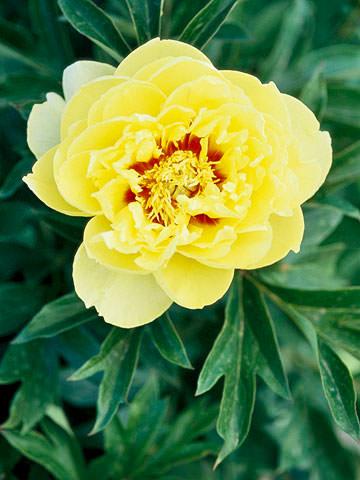
Gay Paree is another bi-color peony with strong seems and a mid season bloom.
Big Ben is a good choice for peony virgins, because of the natural vigor of the plant. Oh, and it’s fragrant!
America is our choice for a red blooming peony. It blooms early and has a nice, strong habit.
Finally, want to be more inspired?

There are both herbaceous peonies, and tree peonies. Herbaceous are the bush kind that are the most common, and easier to grow. Peonies live for up to 50 years, so think of them as a long term investment in your garden. They like full sun, thrive in zones 3-8, grow 3-4 feet and bloom in May and June, depending on the variety. If you buy peony crowns in the fall, it’s a lot like choosing healthy bulbs. Choose a crown with at least three good bugs, then plant them facing up no more than 2 inches below the soil. Number one way to keep your peony from blooming? Plant it too deep.

Peonies like deep, fertile soil. Basically, that means before you plant your peony, dig deep, add lot’s of organic matter, and make really sure you’ve picked the right spot. They do NOT like to be transplanted. They make their home a forever home, so keep that in mind. Peony do not have strong stems, so they tend to flop over, especially when in flower. The best way to deal with this is to create a “cage” of support just as the peony is peeking out of the ground in spring. That way, the plant grows into it’s support, gradually covers it, and never misses a beat! At the end of the season after the plant has died back with the frost, cut back and discard the old foliage. Do not add it to your compost pile, to prevent disease. That’s it! Love ’em and they might outlive their owners! And in the meantime, provide you with spring flowers that are beloved by both gardeners and non gardeners alike.

Here is a taste of Peony varieties that should be easily available and are good choices for any garden! Sarah Bernhardt is one of the most planted peonies of all time, and is an old fashioned variety from the early 1900’s. It grows to 36 inches and blooms in June, and has a light fragrance.

Festiva Maxima is another old variety that is still extremely popular, and my fav white variety. Pure white and flecked with red, growing to 36 inches.

Raspberry Sundae is a two tone variety with a round cupped form.

Bartzella blooms mid season, and has a rare yellow peony flower.

Gay Paree is another bi-color peony with strong seems and a mid season bloom.

Big Ben is a good choice for peony virgins, because of the natural vigor of the plant. Oh, and it’s fragrant!

America is our choice for a red blooming peony. It blooms early and has a nice, strong habit.

Finally, want to be more inspired?

文章


